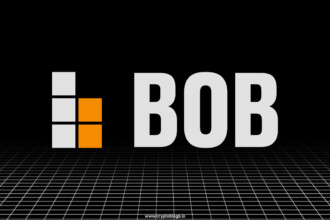Ethereum Classic (ETC) is a decentralized blockchain network that emerged from Ethereum following a pivotal event in the network’s history. Not being just an offshoot of Ethereum; Ethereum Classic represents a different ideology and approach to blockchain governance. The split that led to the formation of Ethereum Classic from Ethereum was rooted in a philosophical debate: should the blockchain be immutable, even in the face of an attack that compromised millions of dollars? Or should it adapt and recover from such events, preserving the financial interests of its users?
Although Ethereum (ETH) and Ethereum Classic share common roots, they have evolved differently over time. This article explores the origins of Ethereum Classic, how it differs from Ethereum, and its future potential.
What is Ethereum Classic?
Ethereum Classic is the original Ethereum blockchain that came into existence after a hard fork in July 2016. The fork was a response to the infamous DAO hack where a vulnerability in a smart contract allowed an attacker to siphon millions of dollars worth of Ether (ETH). In response, the Ethereum community proposed rolling back the blockchain to reverse the hack and restore the lost funds.
While most of the community supported the decision, a group believed this rollback undermined the immutability of blockchain technology. This group continued to use the original Ethereum chain, which came to be known as Ethereum Classic.
Ethereum Classic operates under the philosophy of “Code is Law,” meaning once a smart contract is deployed, it should run as programmed without external intervention or censorship.
How is Ethereum Classic different from Ethereum?
Although Ethereum Classic and Ethereum both originated from the same blockchain, several key differences now set them apart:
- Philosophy: The fundamental difference lies in the ideological divide. Ethereum Classic adheres strictly to the principles of decentralization and immutability, resisting any changes to the blockchain’s history. Ethereum, on the other hand, has adopted a more pragmatic approach, prioritizing flexibility and security.
- Hard Fork: The split between the two networks happened after the DAO hack. Ethereum Classic remained on the original blockchain and Ethereum implemented a hard fork to recover the stolen funds. Thus, creating a new blockchain that retained the Ethereum name.
- Development and Upgrades: Ethereum has seen numerous updates and improvements – such as Ethereum 2.0 – which introduced Proof of Stake (PoS) consensus. In contrast, Ethereum Classic remains committed to the Proof of Work (PoW) consensus mechanism – similar to Bitcoin – and does not plan to transition to PoS.
- Community and Ecosystem: Ethereum enjoys a larger developer and user community, leading to a more extensive ecosystem of dApps, DeFi protocols and NFTs. Ethereum Classic meanwhile, still has a smaller developer community and fewer decentralized applications.
ETC & ETH
Ethereum Classic (ETC) uses the Proof of Work (PoW) consensus algorithm where miners solve complex mathematical puzzles to validate transactions and secure the network. This method provides high security but consumes significant energy.
Ethereum (ETH) – following the Merge upgrade – transitioned to Proof of Stake (PoS) consensus. This mechanism uses a more energy-efficient model that allows users to validate transactions and create new blocks based on the amount of cryptocurrency they hold on the network (staked). The move to PoS aimed to enhance scalability, reduce energy consumption and improve overall network efficiency.
In terms of value and market capitalization, ETH has consistently been the more prominent and widely adopted asset. Ethereum’s robust ecosystem has fueled its dominance, while Ethereum Classic has often been seen as a niche platform with it mainly focusing on its ideological adherence to blockchain immutability.
Future of Ethereum Classic
The future of Ethereum Classic is uncertain but its commitment to the original principles of decentralization and immutability ensures a loyal following. While Ethereum continues to expand with major upgrades like Ethereum 2.0, Ethereum Classic’s future may depend on its ability to offer value in its original form.
ETC has potential use cases for those who prioritize unchangeable contracts. However, it faces thorough challenges in keeping up with the technological advancements and growing network like Ethereum. Some believe Ethereum Classic will continue to exist as a niche platform while others hope for new innovations and upgrades to keep it competitive in the evolving blockchain landscape.
Conclusion
Ethereum Classic is a testament to the blockchain principle of immutability as it is staying true to its roots even in the face of controversy. While Ethereum has evolved and dominated the decentralized space with rapid innovations, Ethereum Classic remains a viable option for those who believe in preserving the integrity of the original blockchain. Both these blockchain networks have their own unique strengths and a community to look after their growth. Now we have to see in future how Ethereum Classic will approach growth while staying committed to its core values.
Keep Reading:






